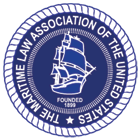How Law and Insurance Influence Risk Management: A Path to Incentivize Safety
ABSTRACT
This article reviews how current business and legal structures support risk management, and whether changes to these structures could increase incentives for risk reduction. This inquiry focuses on the business and legal relationships between key private parties with interests in and responsibilities for the safe condition of commercial vessels in the context of marine insurance coverage, but is applicable to other insurance, rating, and risk management contexts. The principals in this context are shipowners, charterers, cargo owners, and insurance underwriters; other key parties include insurance brokers and ship classification societies and surveyors. The parties have contracts defining their responsibilities, and often affording or receiving express and implied warranties. These determine which party—and often but not always their insurer—is liable for a loss, or is due compensation. This system of industry practices, overlaid on the principles of contract and tort, assigns relevant risks—but revisiting these assignments may promote more effective and proactive risk management.
The relevant legal regime addressing these relationships is unique and longstanding, with the U.S. Constitution affording “admiralty and maritime jurisdiction” to the federal courts. While admiralty is among the few remaining areas of federal common law, state laws also come into play regarding aspects of maritime law, and in particular, marine insurance law. Much of U.S. maritime law is taken from or has been influenced by the laws of England in light of England’s historic and ongoing role in international shipping, and the significant presence of the shipping industry and related services in London and other parts of the United Kingdom. However, the Fifth Circuit has taken a more aggressive posture with regard to the potential liability of ship classification societies as well as the warranty of seaworthiness, while the Second Circuit has generally declined to hold classification societies liable for negligence—consistent with English law. The Second and Third Circuits have been more aggressive in interpreting safe berth clauses in charter contracts as warranties, while the Fifth Circuit applies a duty of due diligence. English law has recently moderated earlier holdings of the clause as a strict warranty. The U.S. Supreme Court will hear argument on this split in November 2019.
For over the past century, since 1906, the U.K. statutory law on marine insurance had been largely stable. However, Parliament recently updated U.K. insurance law, with the Insurance Act 2015 coming into force in 2016. It remains to be seen how much of the new Insurance Act 2015 might be adopted through statutory or common law in the United States, whether the new Act may alter the relationships among the key parties, and how changes to these relationships might serve to reinforce incentives for marine safety.
Part I of this article describes the placement of marine insurance coverage and the requisite classification survey. Part II examines relevant legal aspects of marine liability and insurance, including those stemming from the Insurance Act 2015. Part III explores how maritime law and industry practice could evolve to further promote safety through the allocation of relevant risks, and how safety incentives need to be balanced with other legal and practical considerations—particularly the limited capacity of courts to set or enforce standards in a manner requiring professional maritime knowledge.


Discussion (0)
There are no comments for this doc yet.